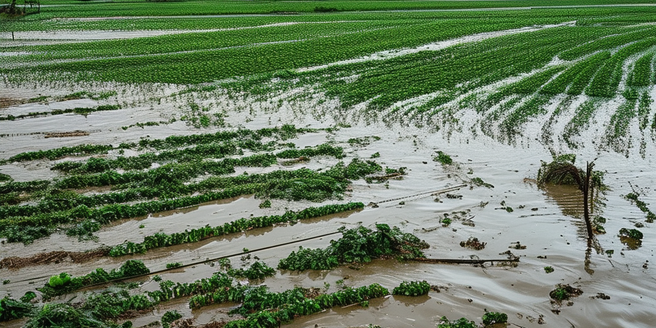
Understanding La Niña: Causes and Characteristics
La Niña is characterized by unusual cooling of ocean surface temperatures in the central and eastern Pacific Ocean. This phenomenon is part of a broader climate pattern known as the El Niño-Southern Oscillation (ENSO), which alternates between La Niña and its counterpart, El Niño. During a La Niña event, changes in winds and ocean currents result in an increase in the upwelling of cold water in the equatorial Pacific region. This cooling effect disrupts normal weather patterns, typically leading to distinctive changes in temperature and precipitation around the globe. Understanding the causes and characteristics of La Niña is essential for predicting its potential impacts on global weather systems, agriculture, and water resources. Scientists study these patterns to forecast La Niña events and prepare for their wide-ranging effects.
Historical Impact of La Niña on Monsoon Seasons
La Niña events have historically influenced monsoon seasons worldwide, primarily affecting regions dependent on monsoon rains. In South Asia, La Niña is often associated with stronger-than-normal monsoon seasons, leading to heavy rainfall and increased river flow. This can enhance agricultural productivity but also raises the likelihood of flooding in susceptible areas. Conversely, in parts of the Americas, La Niña can intensify drought conditions by veering away moisture-bearing winds. Over the years, these fluctuating monsoon patterns have underscored the need to understand La Niña’s historical impacts to better prepare for future climatic anomalies. By analyzing past events, scientists and policymakers can develop strategies to mitigate risks associated with La Niña’s effects on monsoons, safeguarding both ecological and economic systems.
Comparing La Niña and El Niño: Key Differences
La Niña and El Niño are two opposing phases of the El Niño-Southern Oscillation (ENSO) that have profound impacts on global weather. While La Niña results in cooler ocean surface temperatures in the central and eastern Pacific, El Niño is characterized by warmer temperatures in the same regions. These temperature variations influence atmospheric circulation, leading to distinct weather patterns worldwide. For example, La Niña typically brings wetter conditions to Southeast Asia and Australia, while El Niño tends to cause dry spells. In contrast, El Niño can lead to milder winters in North America, whereas La Niña often results in harsher conditions. Understanding the key differences between these two phenomena is crucial for developing accurate climate forecasts and implementing appropriate measures to manage their respective impacts.
Global Regions Most Affected by La Niña
La Niña events have a significant impact on various global regions, each experiencing distinct climatic effects. In Southeast Asia and Australia, La Niña often brings increased rainfall, leading to floods and landslides. Similarly, the Indian subcontinent might witness intensified monsoon seasons with potentially excessive rainfall. Conversely, in South America, particularly Brazil, La Niña can trigger drought conditions adversely affecting agriculture. Meanwhile, parts of North America, particularly the Pacific Northwest, may experience cooler and wetter winters. These varied impacts necessitate region-specific preparedness plans to mitigate adverse outcomes. Understanding how La Niña influences different areas helps in developing adaptive strategies to manage risks effectively and ensures communities are better equipped to handle its challenges.
Future Predictions: La Niña and Climate Change
As climate change progresses, predicting future La Niña events becomes increasingly complex but crucial. Climate models suggest that while the frequency of La Niña might not change significantly, its intensity might increase due to warmer global temperatures. This could amplify La Niña’s typical effects, leading to more extreme weather events such as heightened rainfall, stronger storms, or severe droughts in impacted areas. Researchers are diligently working to understand the interaction between La Niña and climate change to refine their predictions and create more effective mitigation strategies. Accurate forecasts will be vital for agricultural planning, water resource management, and disaster preparedness, helping communities mitigate the potential heightened risks associated with future La Niña phenomena. Tracking these changes remains a priority for scientists worldwide.
